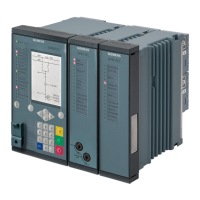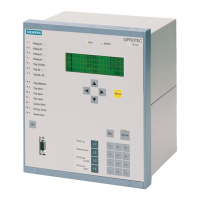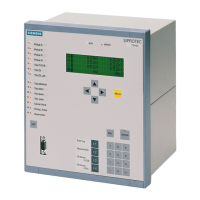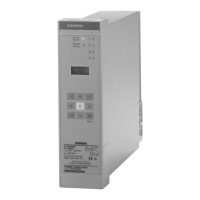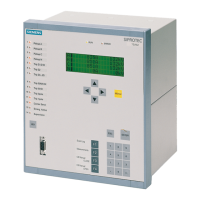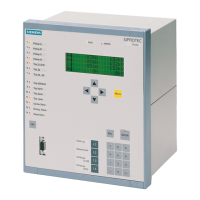Functions
2.43 Trip Circuit Supervision
SIPROTEC, 7UM62, Manual
C53000-G1176-C149-7, Release date 03.2010
298
Monitoring with One Binary Input
The binary input is connected in parallel to the respective command relay contact of the protection device ac-
cording to the following figure. The circuit breaker auxiliary contact is bridged with a high-ohmic equivalent re-
sistor R.
The control voltage for the circuit breaker should be at least twice as high as the minimum voltage drop at binary
input (U
CTRL
> 2 · U
BImin
since approximately the same voltage drop occurs at equivalent resistor R). Since at
least 19 V are needed for the binary input, the monitor can be used with a system control voltage of over 38 V.
Figure 2-139 Principle of trip circuit monitoring with one binary input
During normal operation, the binary input is activated (logical condition „H“) when the trip contact is open and
the trip circuit is intact, because the supervision circuit is closed either by the circuit breaker auxiliary contact
(if the circuit breaker is closed) or through the equivalent resistor R. Only as long as the trip contact is closed
is the binary input short-circuited and thereby deactivated (logical condition „L“).
If the binary input is permanently deactivated during operation, an interruption in the trip circuit or a failure of
the (trip) control voltage can be assumed.
As the trip circuit supervision is not operative during a system fault condition (picked-up status of the device),
the closed trip contact does not lead to an alarm. If, however, tripping contacts from other devices operate in
parallel with the trip circuit, then the fault annunciation must be delayed (see also the following figure). The con-
ditions of the binary input are therefore checked 500 times before an annunciation is issued. A condition check
takes place about every 600 ms, so trip circuit monitoring is only activated during an actual malfunction of the
trip circuit (after 300 s). After the fault in the trip circuit has been eliminated, the alarm is reset automatically
after the same time.
Note
If the lock-out function is used, the trip circuit monitoring with only one binary input must not be used, as the
relay remains permanently picked up after a trip command (longer than 300s).
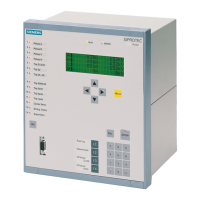
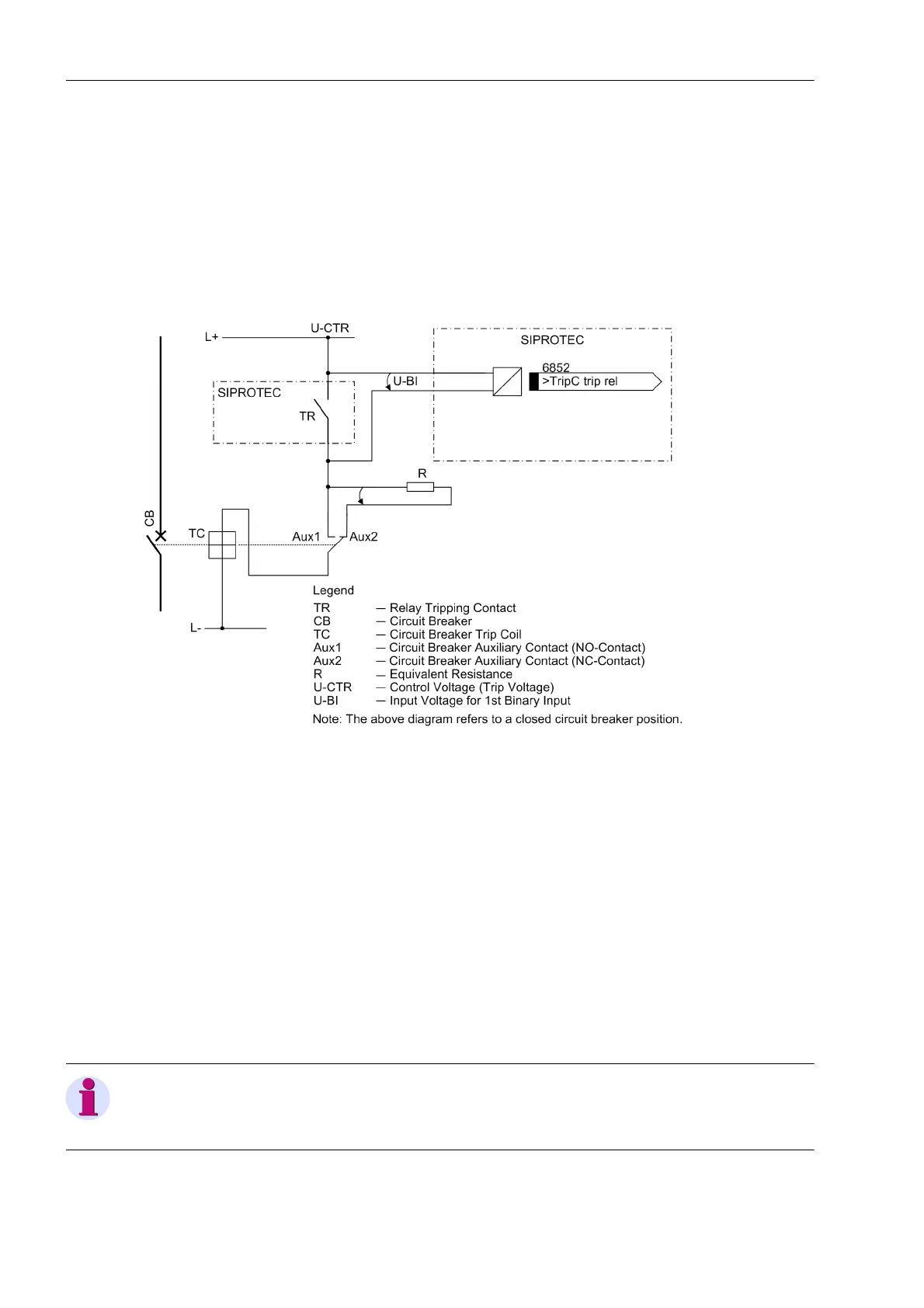